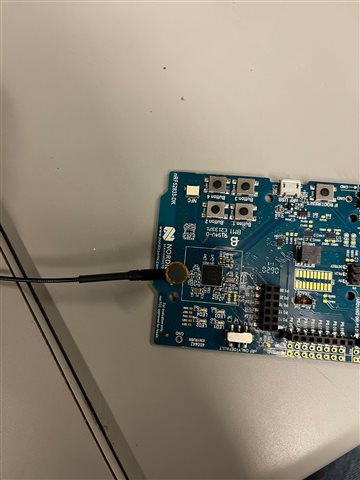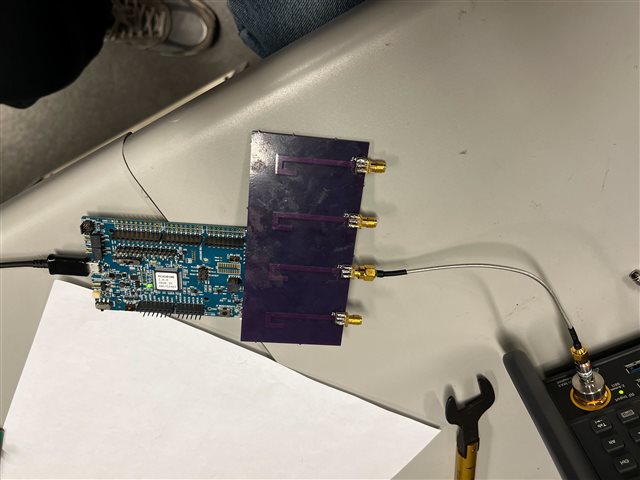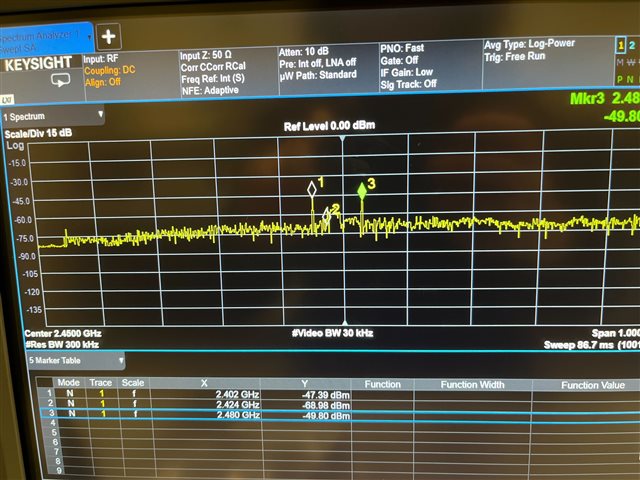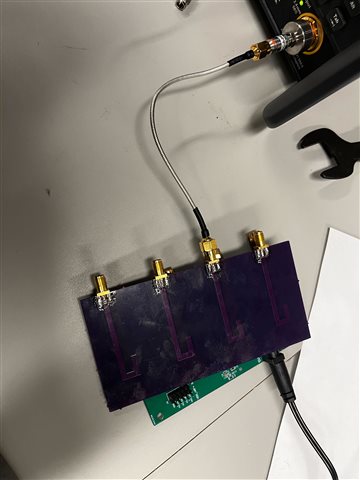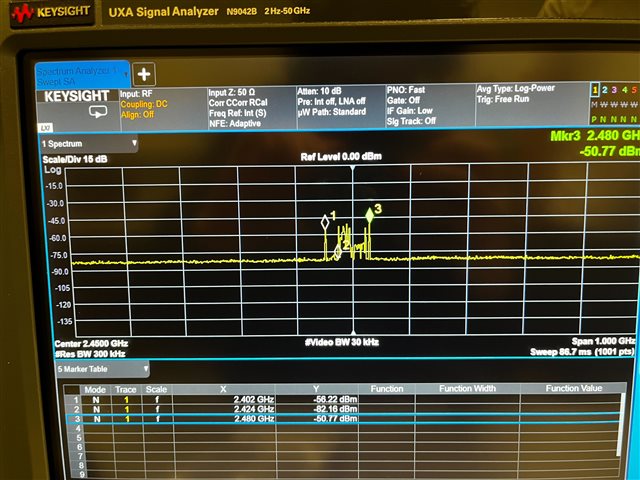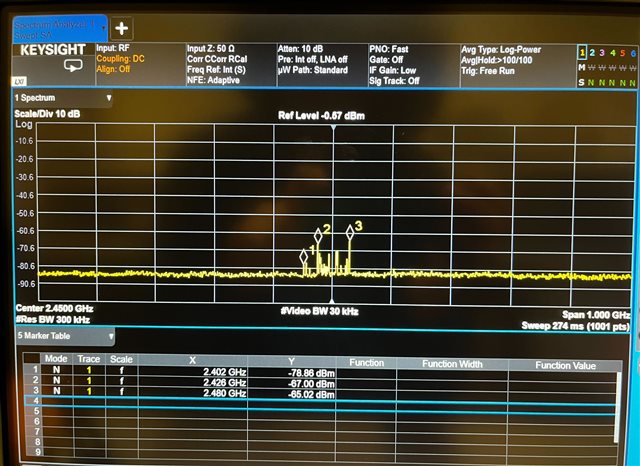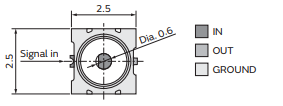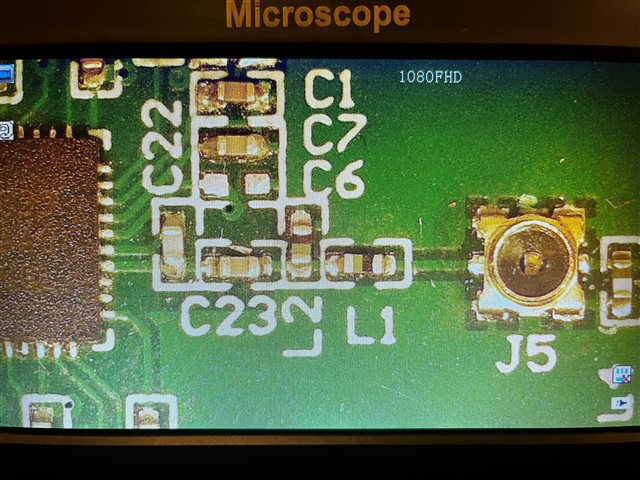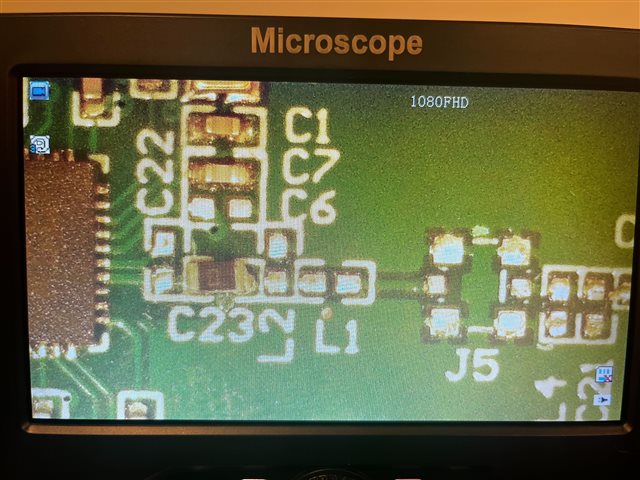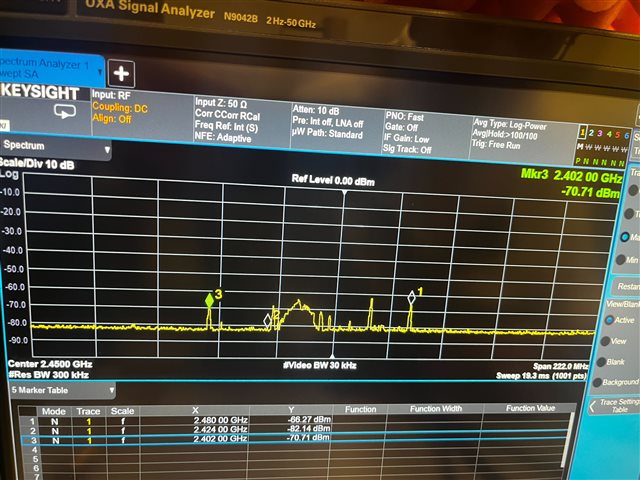test setup
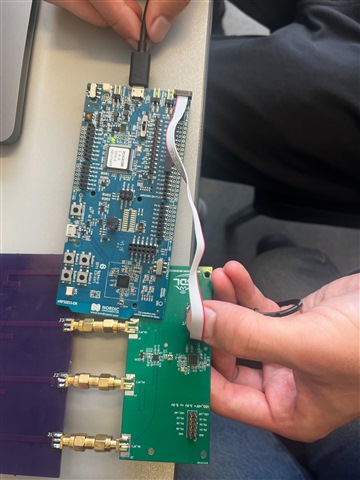
the custom board schematic
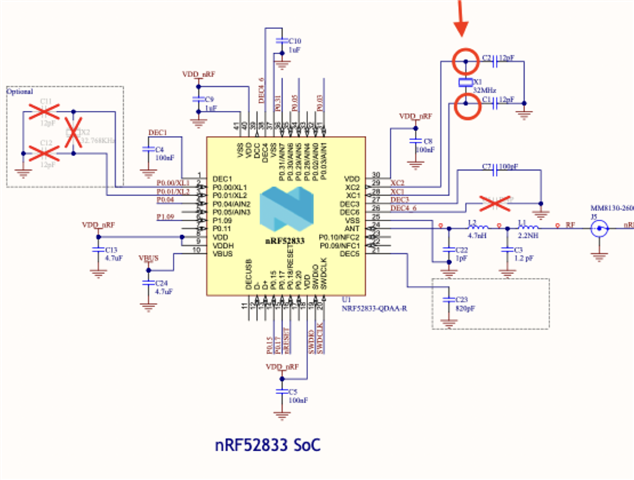
we tried to flash the custom board with the beacon sample here https://developer.nordicsemi.com/nRF_Connect_SDK/doc/latest/zephyr/samples/bluetooth/beacon/README.html
Connect debug out header P19 on DK to jtag-style connector on custom board. Connect custom board to power supply.
Testing as follows:
1.Program the 52833 chip on the dk without the connection above
Result: success, DK beacons as expected
2.Program the 52833 chip on the dk with the connection above, but do not power the custom board
Result: success, DK beacons as expected. Custom board does not beacon as it is not powered.
3.Program the 52833 chip on the custom board with connection above and power.
Result: DK does not beacon, setup programs custom board only. Successfully program the custom board with no errors in VSCode when connecting or flashing. However, board is till not beaconing at all.
The VS code message for the third test
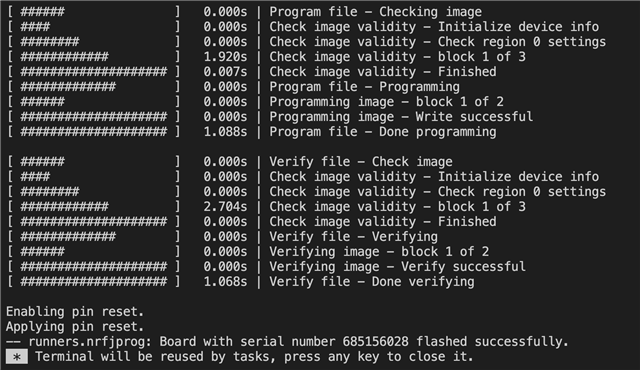
We then examined the voltage of the chip
Following measurements were done:
|
Measurement |
DK Result |
Custom Board Result |
|
Voltage at DEC1 |
1.1 V |
0.75V |
|
Voltage at Vbus |
0V |
< 0.001V |
Following these results, capacitor C24 in our custom board was removed. No difference in measure Voltage was observed. Custom board is still not functional.
Question:
1. did we have a correct setup to flash the custom board
2. what could be the reason that Voltage at DEC1 is not correct on our custom board
Thank you for reading through this problem.



